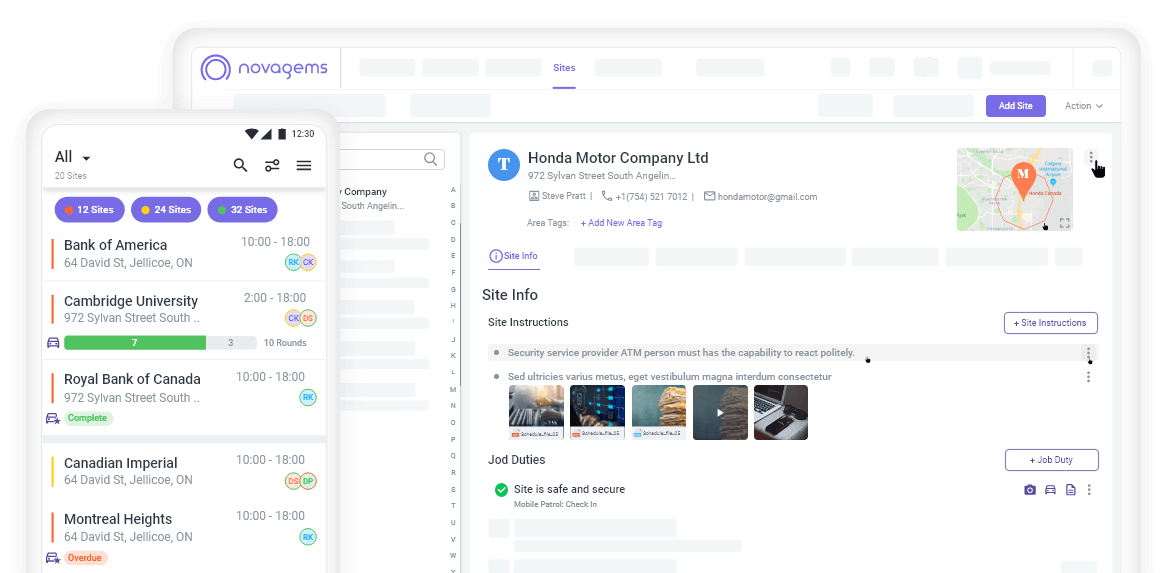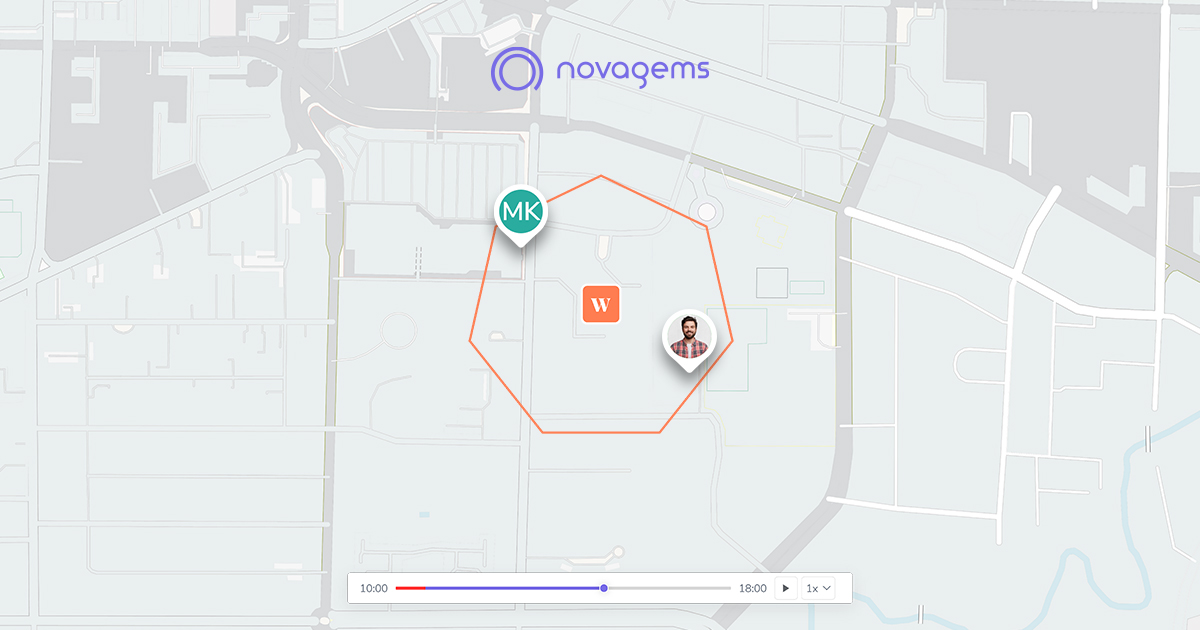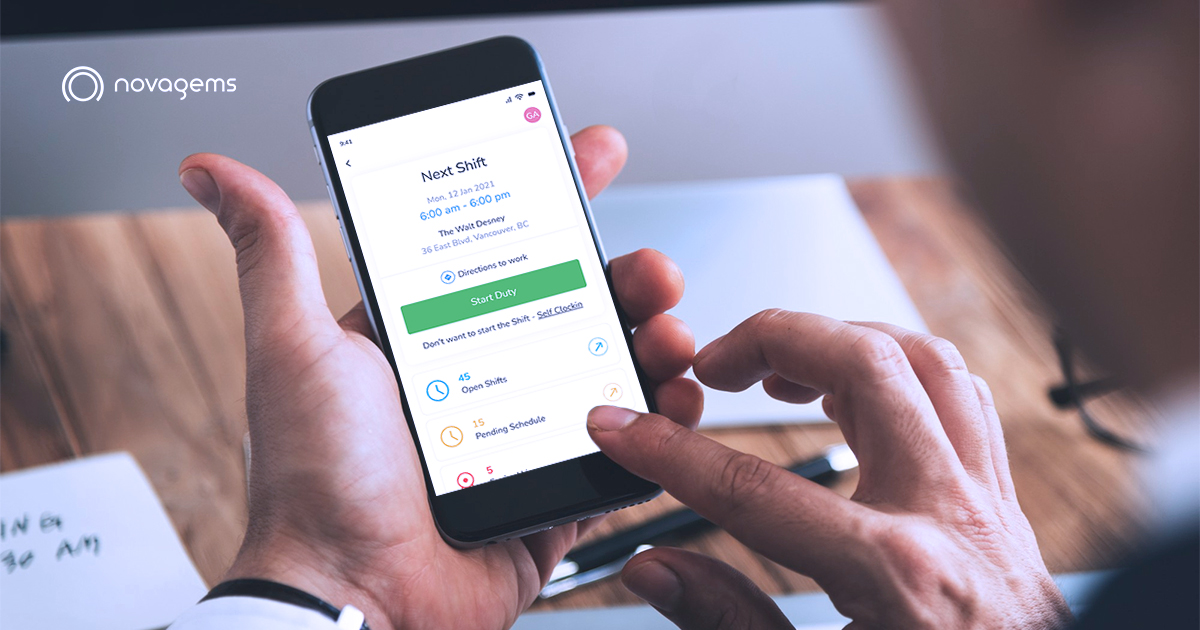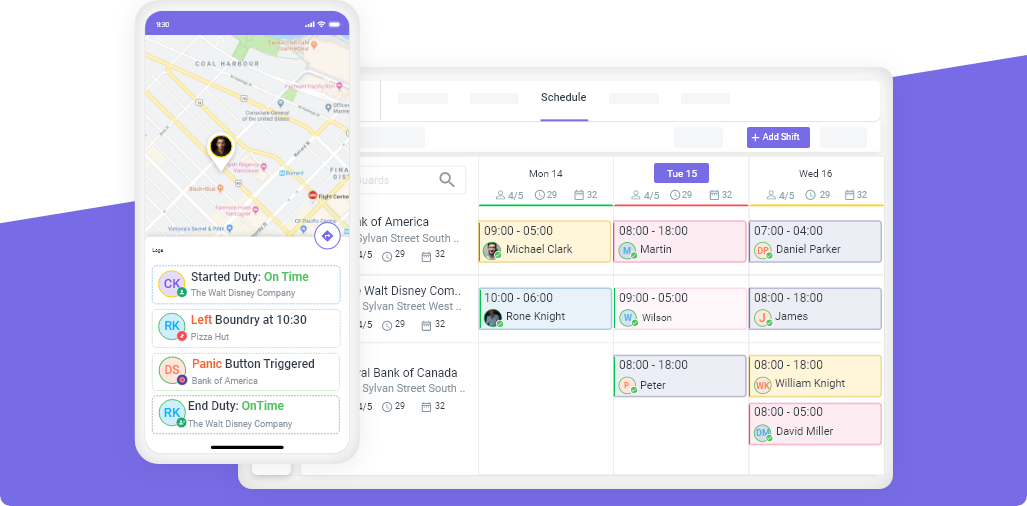Janitorial Inspection: Why You Need Checklists And How To Create Them
Published on: Fri, Nov 26, 2021
Read in 14 minutes
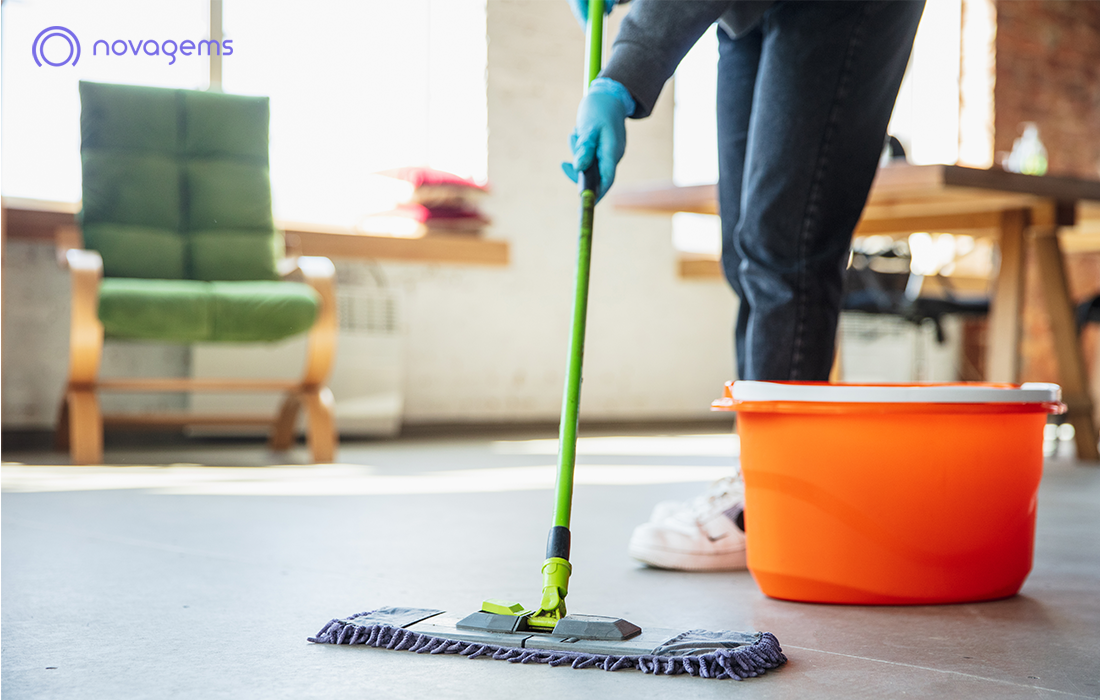
Key takeaways
- A janitorial inspection checklist is essential for maintaining cleanliness, compliance, and customer satisfaction across facilities.
- Digital inspections outperform manual methods by offering real-time reporting, photo documentation, and performance analytics.
- Using janitorial inspection software saves time, increases transparency, and improves inspection accuracy
Maintaining a clean and hygienic environment has become more important than ever. Whether you’re managing an office, school, hospital, or retail store, your cleaning standards reflect your professionalism, safety measures, and attention to detail. That’s where a janitorial inspection checklist plays a critical role.
In this guide, we’ll explore why inspections are a must in 2025, the different types of inspections, the top janitorial inspection best practices, and how technology is changing the way we manage cleaning tasks, especially in commercial cleaning inspection workflows.
Why Janitorial Inspections Are Non-Negotiable in 2025
In 2025, expectations around cleanliness are high, and rightfully so. Customers, tenants, employees, and regulators all demand clean, healthy spaces. Here’s why janitorial inspections are absolutely necessary:
- Health and Safety Compliance: Post-pandemic standards are stricter. Regular inspections ensure you’re meeting health codes and sanitation guidelines. 94% of employees said a clean workplace improves their concentration and productivity.
- Accountability: Inspections hold teams accountable. If certain areas are repeatedly missed or poorly cleaned, inspections catch that early.
- Consistent Results Across Locations: A standardized janitorial inspection checklist ensures that every site, no matter the location or size, meets the same level of cleanliness.
- Cost Savings: By spotting problems early—like leaks, spills, or equipment failure—you prevent expensive repairs or health incidents.
- Customer Satisfaction: Cleanliness impacts your brand reputation. A spotless restroom or shiny lobby leaves a lasting impression. A dirty one? It might cost you business.
In short, janitorial inspections are no longer optional—they’re part of doing business right in 2025.
Cleaning services are something businesses and homeowners seek to get the squeaky-clean and fresh feel on their property. While it is a business that is in great demand, especially around the holiday season, it gets tricky to manage one.
If you own or manage a cleaning company, it is evident to feel overwhelmed at times. Supervising and keeping track of every cleaner, looking after their tasks, and then performing inspections. All these tasks and managing a smooth workflow and client communication are quite a lot on your plate.
Well, we are not here to point out your evident problems. We are here to provide you with solutions for your management and supervision problems. While a cleaning services management system can solve it all for you, let us dive into one crucial aspect - performing the inspections.
How The Janitorial Checklists Will Help You Boost Your Business?
If you have started a cleaning business then you must know the importance of janitorial inspection software that will streamline your operations. It will make your cleaning inspection so easy that it will stop looking like a task.
A janitorial inspection app shall provide you with enough features that you can smartly use in your day-to-day tasks.
In Field Inspection
Your Inspection software must be capable enough to provide you with enough tools that you can oversee your cleaners when they are out working in the field. Since most of the time, cleaners are handling multiple tasks and jobs outside their organization the software will provide visual proofs you can ask to check the quality of work.
Cleaning Reports
Reduce the stress your cleaners feel when they have to prepare reports. Increase productivity and efficiency across your organization with modern reporting tools. Easily readable and customized reports that will straightly transform the information will take no time in becoming a favorite amongst your employees and clients.
Personalized Workflow
Quickly send the tasks and job duties that need to be done. Have the cleaners work according to their schedules without having to miss out on anything with instant notification. Smartly collect data without any errors and increase productivity with better communication. Have tailor-made reports at your dismissal for inspection.
Cleaning Inspections and Checklists
Cleaning inspections can be daunting, but they help improve the quality of your services. However, with so many pointers to take care of, you might skip a thing or two while working on it. To avoid slip-ups, having a janitorial inspection checklist or a janitorial inspection form can help. This checklist will help you get through the inspection process smoothly, without skipping any crucial tasks.
Things to Consider Before Creating An Inspection Checklist
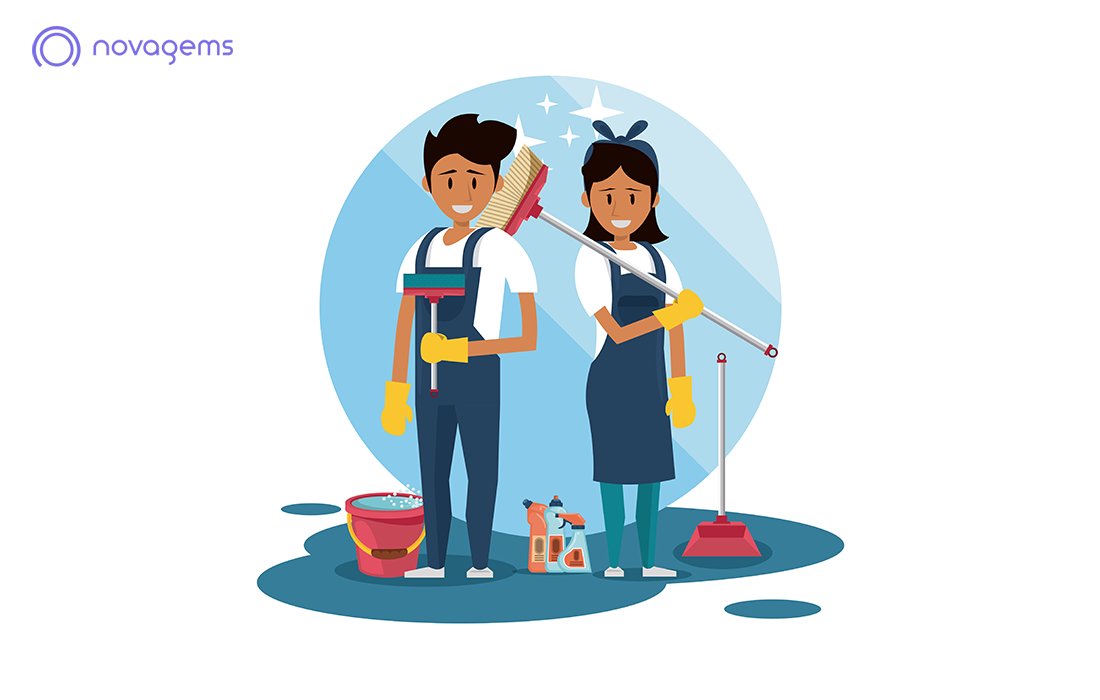
To make things faster, here is a cleaning inspection checklist that we have created. We created it based on the experience we acquired working with cleaning companies, managers, and cleaners. So, let’s have a look at the main components of an inspection checklist and how it can help you:
1) How Frequent Are The Inspections?
Cleaning inspections are frequent. However, the frequency varies from project to project. For instance, if you have a one-time cleaning project, you will perform the cleaning inspection at the end and call it a day! However, for regular or long-term projects like cleaning a building, you need to consider the frequency of cleaning inspection.
Will you perform the inspection daily, weekly, quarterly, or monthly? Or will there be surprise visits?
Also, if the area is large, performing the cleaning inspection in one go might not be possible. So, decide first in which areas you need to carry out the cleaning inspection. Then decide on the frequency for each.
Once you decide, it gets easier to create a cleaning inspection checklist. Things you will look after will be different in a daily inspection than a monthly one. With the inspection frequency set in your mind, creating an inspection checklist doesn’t seem like such a daunting task.
2) Different Types Of Inspections
The other thing to consider is what type of inspection you will perform. If you work for healthcare facilities, labs, and hospitals, you require a different method of cleaning inspection. These methods use fluorescent marking chemicals and Adenosine Triphosphate (ATP) to trace germs or dirt.
The inspectors use these products in the cases of medical cleaning. For regular inspections, you can create a simple checklist. In that case, you can manually scan the areas and mark the things done.
Understanding the types of inspections helps you choose the right method for your facility. Each inspection type serves a different purpose and plays a vital role in quality control.
Scheduled vs Surprise Inspections
Scheduled inspections are planned ahead. These might happen weekly, bi-weekly, or monthly. They give staff time to prepare and allow for a systematic review of all cleaning tasks.
Benefits:
- Easy to manage and schedule
- Helps evaluate routine cleaning standards
- Great for regular reporting
Surprise inspections, on the other hand, happen without warning. This gives a more accurate view of what the cleaning actually looks like during day-to-day operations.
Benefits:
- Honest insight into real-time performance
- Discourages cutting corners
- Useful for client-facing locations like hotels or restaurants
Combining both types of inspections provides a balanced approach. While scheduled inspections promote structure, surprise visits help you stay alert and accountable.
Manual vs Digital Inspections
Let’s break it down.
Manual inspections involve using paper forms or printed checklists. While they’re easy to start with, they come with drawbacks. 31% of facilities still using paper inspection forms report inconsistent cleaning quality and lack of accountability.
- Paper can be lost or damaged
- Data entry is slow and often incomplete
- Hard to track performance trends over time
Digital inspections, however, use apps or software on tablets and smartphones. They’re the modern way to handle commercial cleaning inspection tasks.
Benefits of digital:
- Automatically timestamped and geotagged
- Photos and comments can be attached to tasks
- Instant reports are generated and stored online
- Easy to compare multiple sites and cleaners
- Reduces human error
In 2025, most cleaning businesses and facility managers are moving toward digital inspections. It saves time, gives better insights, and makes reporting smoother.
On the other hand, for the above process, the checklist is different and has some extra pointers.
3) Different Components Of The Inspection Process
Now that you know how often you will perform the inspection and what process you will follow, it is time to decide on the components. Once you do that, you can rest assured that nothing will be left unattended.
To decide on these, first, you pick the areas that need an inspection. For example, you start with the kitchen. Now, assign the components to this area. You can mention these components as the pointers that you need to check and inspect during the process. Here, they can be - clean and disinfect the cabinets, kitchen counters, the refrigerator, the oven, the coffee machine, etc.
Whatever work needs to be done and assigned to the cleaners must be added as the components of that area. This way, you have a cleaning inspection checklist template that you can use for all clients and projects after edits.
4) Rating System To Follow
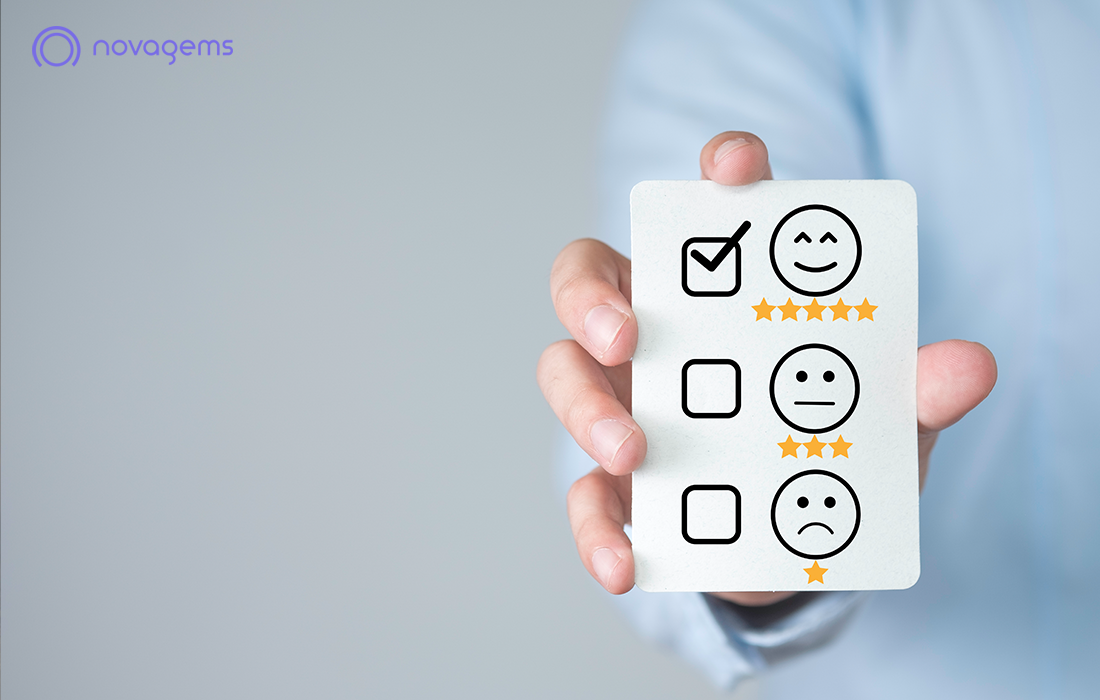
How will you rate the work done and the performance of the cleaners? There are different methods to do it. You can give a rating to their work based on the percentage completed successfully or go for a star rating. You can also rate them from 1 to 10 or follow performance measures like Poor, Good, Excellent, etc.
A rating system is crucial to keep track of the performance of a cleaner through a period. If your cleaning company does not follow such a system, there is no point in performing cleaning inspections. So, decide on the rating system you will use and keep room for it in your cleaning inspection checklist.
5) Following A Janitorial Inspection Checklist Template
Do you find yourself creating a fresh cleaning inspection checklist every time inspection is due? Isn’t that a lot of work? Well, avoid working hard and start working smart! Once you have all the crucial factors in mind, create a checklist and use it as a template for all other inspections. Of course, as we mentioned above, your projects are different and might need different types of checklists. Fret not! You can create two or three templates that cover pretty much all your project types. Mark them as per the project and inspection type to sort out later.
It saves so much of your time and doesn’t let you skip on any crucial things in your cleaning inspection checklist. So, get yourself a janitorial checklist template and use it to save time and effort during future inspections.
If you have had enough of making the checklists manually, it is time to start using a janitorial management system. The system not only allows you to create inspection checklists but provides 360-degree solutions when it comes to cleaner or janitor management. Life gets easier with such a system in place.
If you are looking for such a system, contact Novagems. Their Janitorial Services Management System is an all-encompassing solution for your management and supervision problems.
Now that we have looked at the different things to consider while creating a cleaning inspection checklist, here is a template you can use:
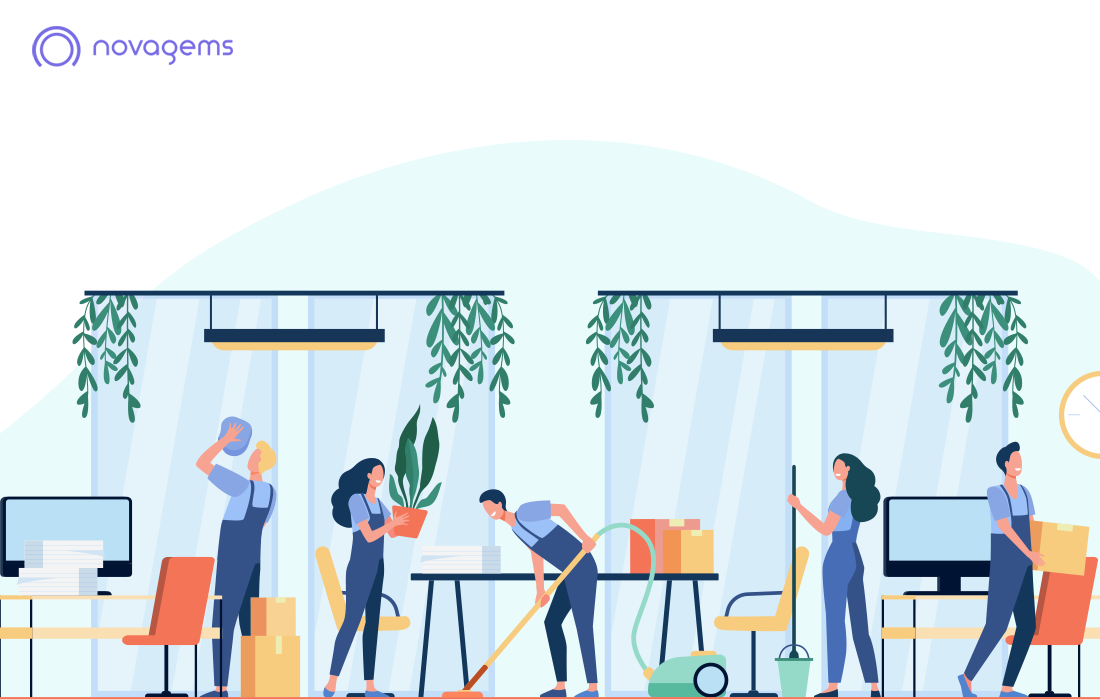
The Ultimate Cleaning Inspection Checklist:
The checklist below divides your work area or room-wise. So, you can visit each room one by one and check the cleaning progress. Let’s look at these pointers now:
Reception Area
- Clean and disinfect the reception counter
- Disinfect the seating in the waiting area
- Clean and disinfect the coffee table
- Dust and clean shelves, cabinets, and fixtures
- Spot-clean all furniture
- Sweep, Vacuum, and Mop the floors
- Sanitize the Computer and other equipment
- Dust and Clean the HVAC system
Entry and Exit Points
- Clean and disinfect the doors and walls
- Clean and disinfect the door handles
- Clean and reinstall doormats
- Dust the planters
- Clean the lighting fixtures
- Sweep and mop the floors
The Kitchen
- Clear, disinfect, and clean the countertops
- Declutter and disinfect cabinets and drawers
- Clean the refrigerator
- Clean the oven and coffee maker
- Take the trash out
- Sweep and mop the floors
Bathroom
- Clean and sanitize toilets
- Wash sinks and faucets
- Unclog drainage
- Clean the mirrors
- Refill soap dispensers
- Restock toilet paper and tissues
- Take the track out
- Disinfect and clean the floors
- Clean doors and door knobs
Besides, there can be many areas and places that you can add to the list and add components based on the nature of the job. Once you have created a perfect cleaning inspection checklist, use it as a template and keep changing it according to the clients and work done.
Janitorial Inspection Best Practices
Creating a janitorial inspection checklist is only half the work. To get the best results, you need to follow tried-and-true janitorial inspection best practices.
Let’s go over the most important ones:
- Be Specific, Not Vague: “Clean restroom” is vague. Instead, break it down into tasks like:
-
- Disinfect toilet seats and handles
- Refill soap dispensers
- Mop floor with disinfectant
- Empty and reline trash bins
- Use a Consistent Rating System: Teams using structured cleaning checklists complete tasks faster and report fewer missed duties. Many organizations use a 3-point system:
-
- 3 = Excellent
- 2 = Satisfactory
- 1 = Needs Improvement. This helps you track trends and measure improvement over time.
- Train Your Inspectors: Make sure all supervisors or inspectors know how to evaluate correctly. Inconsistent evaluations can ruin the value of your inspection process.
- Encourage Feedback from Cleaning Staff: Turn inspections into learning tools. If something wasn’t up to standard, talk about it constructively. Use the feedback to improve training or cleaning processes.
- Don’t Inspect Everything Every Time: If you’re inspecting daily, focus on high-traffic areas. Weekly or monthly inspections can cover less-used spaces like storage rooms, vents, and ceiling fans.
- Track and Review the Data: Over time, inspection data reveals patterns. Are the same areas failing often? Is a particular shift underperforming? Use this data to make real improvements.
- Update Your Checklist Regularly: Facilities change. Standards evolve. Make sure your checklist is reviewed and updated every 6–12 months to reflect new priorities or procedures.
- Be Fair and Consistent: Don’t treat inspections as “gotcha” moments. Instead, aim to motivate and improve your team. A strong inspection culture builds pride, not fear.
Following these janitorial inspection best practices builds a culture of quality and professionalism. Businesses lose an average of $2800 per employee per year due to sickness-related absences, many tied to poor hygiene and sanitation. It also shows clients and stakeholders that you take hygiene seriously.
How to Use Technology to Improve Your Inspections
In 2025, using technology to manage your janitorial inspection checklist isn’t just nice to have—it’s essential. Let’s look at how it can transform your inspection process.
Benefits of Using Janitorial Inspection Software
- Real-Time Data Collection Inspectors can complete checklists directly on their phones or tablets. Everything—photos, ratings, notes—is stored and synced instantly.
- Photo Proof and Accountability A photo is worth a thousand words. Attach “before and after” images to your checklist for better communication with clients and cleaners.
- Consistent Inspections Digital tools use templates that ensure every inspector checks the same things, every time.
- Automated Reports No more manually compiling notes. The software generates ready-to-send reports that you can share with your team or clients.
- Custom Templates for Different Sites Each facility is unique. A digital tool lets you customize checklists for office spaces, retail stores, schools, or medical centers—all within one system.
- Performance Tracking and Analytics Over time, you’ll be able to see:
-
- Which areas fail most often
- Which cleaners consistently perform well
- How your team is improving over time
- Mobile Access Anywhere Whether you’re in the building or offsite, you can access inspection results on your dashboard. It saves time and improves communication.
- Client Transparency Share inspection results with clients to build trust. If an issue is found, you can show how it was resolved.
These benefits make digital tools a game-changer for commercial cleaning inspection management. Platforms like Novagems, OrangeQC, and CleanTelligent are designed for exactly this purpose.
So, this was all about creating the perfect cleaning inspection checklist. If you are the manager in a cleaning company looking for solutions to perform a successful inspection, this checklist will help.
Final Thoughts
A professional, consistent, and well-documented janitorial inspection checklist is the backbone of any reliable cleaning operation. By following proven janitorial inspection best practices, you don’t just ensure a cleaner space—you build client trust, prevent future problems, and create a more efficient team.
In 2025, there’s no reason to rely on pen and paper when smarter tools exist. In the future, it is estimated automation could raise productivity growth globally by 0.8 to 1.4 percent annually. Whether you manage a small crew or multiple facilities, inspections backed by technology and thoughtful planning can take your cleaning business to the next level.
For a feature-packed solution to track, manage, and report your cleaning staff, you can also look into Novagems’ Janitorial Management System. The system provides an end-to-end solution for all your management and supervision needs. Our system will help you manage cleaning schedules and send out work orders in real time. You can also send inspection reports to the clients with pictures and videos. The cleaners can also report issues using their version of the app. All this, packed in one system! Get it today! We are just a phone call away!
Get a Free Trial
Sign up For Newsletter
Latest Blog Posts
Get Started
Start being productive & grow your business
with Novagems
